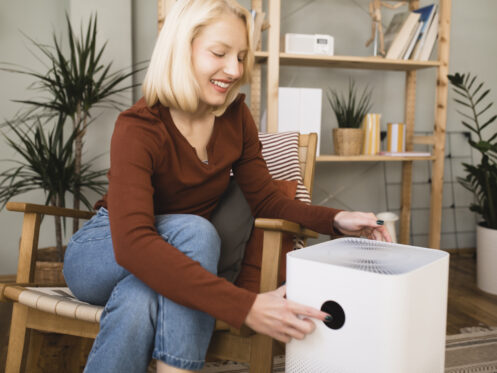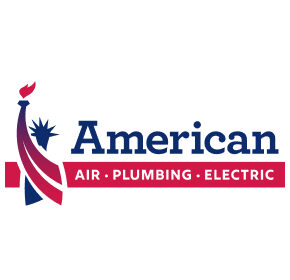Foul-smelling and perpetually dusty air aren’t the only signs of poor indoor air quality (IAQ). There may be people suffering in your Sanford, FL home due to high concentrations of gaseous chemical contaminants or dangerous pathogens. Problems like poor sleep quality, recurring headaches, and chronic fatigue could be the result of low IAQ. According to the Harvard P.H. Chan School of Public Health, low IAQ can even cause or exacerbate chronic anxiety and depression. Whether you’re tired of sniffling, sneezing, and wheezing or want a healthier living environment for your family, the following are eight solid reasons to test your indoor air quality.
1. Find and Fix Radon Leaks
Radon is a radioactive gas that enters buildings via groundwater, natural gas leaks, and various building materials. However, in homes, the most common source of radon exposure is soil. This gas naturally and gradually forms in soil as the thorium, uranium, and radium in rocks break down. In most homes, foundational slabs provide durable and reliable barriers against soil-based radon.
Unfortunately, slab leaks and the resulting foundational cracks create multiple points of ingress for this and other subterranean gases. Radon leaks can also occur in basements with poorly capped sump pumps.
Although your HVAC air filter sieves out dust, hair, dirt, pollen, and other particulates, standard air filters cannot capture and retain gaseous contaminants. When concentrations of this common pollutant become too high, residents can experience symptoms like:
- Chest tightness and chest pain
- Difficulty breathing
- Loss of appetite and unintentional weight loss
- Fatigue
- Coughing and wheezing
Many homeowners are under the mistaken impression that carbon monoxide (CO) detectors also detect radon. However, even the most advanced of these devices do not. Radon is best identified with special radon test kits or whole-home IAQ testing.
2. Spot Problems With Back-drafting Appliances
All fuel-combusting appliances produce carbon monoxide. This gas is a natural byproduct of incomplete fuel combustion. Both odorless and colorless, carbon monoxide replaces oxygen in the blood. During the early stages of CO exposure, people often experience faintness, dizziness, nausea, headaches, and weakness. However, if the source of a CO leak isn’t fixed or if residents don’t leave the building, prolonged CO exposure could prove fatal.
Although all gas-fired furnaces and water heaters are vented to release CO outdoors, venting pipes could become blocked, compressed, or crushed. Bird nests, buildups of ice or leaves, and other debris can also block vent openings at building exteriors.
Homeowners are being encouraged to tighten their home envelopes by installing better insulation, weatherstripping around their windows and doors, and sealing off air leaks in general building materials. These measures prevent the escape of conditioned air and limit both HVAC-related energy consumption and household carbon footprints. However, there are real dangers in creating overly airtight buildings. Airtight buildings pose the risk of back-drafting.
With back-drafting, exiting air creates negative air pressure indoors. Until negative air pressure is corrected, homes draw air in from all available openings, including exhaust vents. If your home envelope is overly tight, even something as simple as turning on a bathroom exhaust fan or your range hood vent could cause back-drafting. Indoor air quality testing will identify elevated levels of CO gas and any other evidence of back-drafting. IAQ testing can also help you develop a solid plan for improved ventilation and better CO detection.
3. Identify and Address Insufficient Air Filtration
All HVAC air filters are given maximum efficiency reporting value (MERV) ratings. These ratings denote the efficacy of air filters. Ranging from 1 through 20, MERV ratings determine how effective these components are in picking up micro-fine allergens and contaminants. Most homeowners use standard air filters with MERV ratings of just 6 to 8. Standard filters will collect and retain textile and carpet fibers, dirt, pet fur, and other large debris. However, things like dust mites and dander often pass right through them.
Higher-rated filters have tighter, denser mesh and larger surface areas. If you have massive, unchecked populations of dust mites or high concentrations of other small-sized allergens, IAQ testing will highlight the need for an HVAC air filter upgrade.
4. Find Fixable IAQ Concerns
Some homes are plagued with fixed or unfixable IAQ concerns. For instance, if you purchased property near an airport or a busy freeway, your living space will always have greater amounts of dust and other airborne debris than homes in more remote locations. This is also true of homes near quarries, active construction, and large tracts of ground with no landscaping.
However, many homes have a range of fixable IAQ concerns that often go undetected. This may be the case in your home if you have ongoing battles with mold and mildew or residents who frequently deal with asthma and allergy attacks. You might have your cat’s litter box too close to your HVAC system’s air intake or you could have a slow and hidden plumbing leak. IAQ testing before mold remediation and before taking other measures to improve your IAQ will inform any investments and changes you make. Taking care of fixable IAQ concerns before installing air-cleaning equipment or proactively treating mold will always provide the best results.
5. Measure Volatile Organic Compounds and Other Building Pollutants
Sadly, many of the contaminants present in homes come from furnishings and building materials. Things like new floors and flooring adhesive, new paint, and wood composites often off-gas large amounts of volatile organic compounds (VOCs). Like other indoor contaminants, these gaseous chemicals can cause symptoms like fatigue, nausea, and headaches, especially when they’re present in high concentrations. Long-term exposure to VOCs can also affect heart health, kidney health, and neurological functioning. Worse still, most new building materials off-gas large amounts of VOCs for up to five years after installation.
Testing for VOCs and other gaseous contaminants will determine the need for advanced IAQ support. Although standard and most upgraded HVAC air filters cannot remove or deactivate these chemical contaminants, many integrated HVAC accessories can.
6. Identify Harmful Household Products
Even if your furnishings and general building materials aren’t off-gassing VOCs, some of the products that you’re regularly using could be introducing them into your living space. Many common household cleaners, room freshening sprays, and plug-in air fresheners fill homes with harmful toxins. Even burning scented candles can wreak havoc on the quality of your indoor air. Testing your IAQ could reveal the need to radically revamp how you clean your living space.
7. Measure Your Home’s Humidity
The U.S. Environmental Protection Agency (EPA) recommends maintaining indoor humidity between 30% and 50%. In humid states like Florida, keeping humidity between 40% and 60% proves a much more reasonable target. However, as per the EPA, when indoor humidity climbs above 60%, mold proliferates. Having an indoor humidity of 60% or higher could indicate the need for whole-house dehumidification equipment. During IAQ testing, HVAC technicians take accurate humidity readings.
8. Find the Right Indoor Air Quality Accessories
There are many ways to remove allergens, gaseous chemical contaminants, bacteria, and viruses that slip through standard HVAC air filter mesh. You can choose from whole-house air purifiers, air scrubbers, and UV sanitizing lights. There are even various options in mechanical ventilation and integrated humidity control equipment. Each of these HVAC additions provides its own unique range of benefits and addresses specific IAQ concerns. Scheduling IAQ testing before choosing and installing any integrated accessory will help you make the most of this investment.
We’ve proudly served Sanford, FL and the surrounding cities since 1986. We offer expert HVAC, plumbing, and electrical services. We also provide advanced indoor air quality solutions. To find out about our preventative maintenance plans or schedule IAQ testing, contact American Air, Plumbing, and Electrical for superior HVAC services today.


